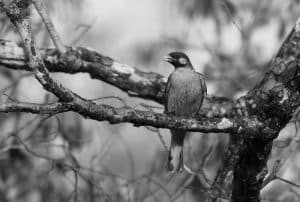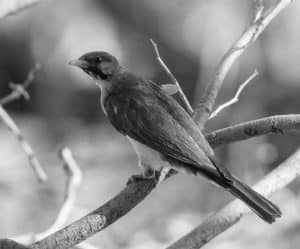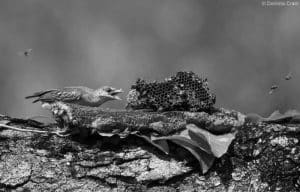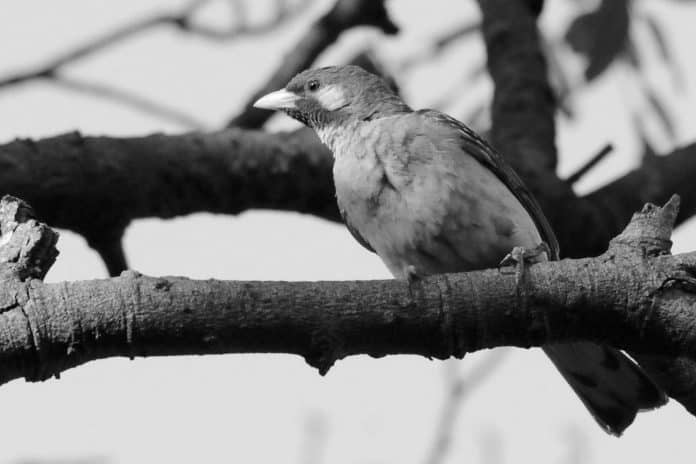Introduction to the Greater Honeyguide
The greater honeyguide, scientifically known as Indicator indicator, is a small bird species found in sub-Saharan Africa, including Tanzania. These birds are known for their ability to guide humans to beehives, where they can then share in the spoils of honeycomb. This relationship between humans and honeyguides has been documented for centuries, and is unique in the animal kingdom. The greater honeyguide in Tanzania is a fascinating bird, with a distinct appearance and an even more fascinating behavior.
Habitat and Distribution of the Greater Honeyguide in Tanzania

The greater honeyguide is found across sub-Saharan Africa, including in the savannahs of Tanzania. These birds prefer open, wooded habitats, and are often found near rivers or other water sources. They are known for their distinctive call, which sounds like “tirr-tirr-tirr,” and can be heard throughout the day. In Tanzania, the greater honeyguide can be found in national parks such as Serengeti, Tarangire, and Lake Manyara.
The Greater Honeyguide’s Unique Relationship with Humans
The greater honeyguide has a unique and mutually beneficial relationship with humans. These birds have evolved to recognize and respond to the calls of the Hadza people, a tribe of hunter-gatherers native to Tanzania. When a Hadza person wants to find honey, they will make a specific call to the greater honeyguide, who will then lead them to the nearest beehive. In exchange for their assistance, the Hadza will share part of the honeycomb with the honeyguide. This relationship has been documented for centuries, and is a testament to the incredible intelligence and cooperation found in the natural world.
The Greater Honeyguide’s Role in Guiding Humans to Honey
The greater honeyguide is a master at finding beehives, and its role in guiding humans to honey has been well-documented. When a Hadza person makes the specific call to the greater honeyguide, the bird will respond with a series of calls and movements, leading the person to the nearest beehive. The honeyguide will then wait patiently while the person collects honey, before taking its share of the spoils. This unique relationship between humans and honeyguides has been studied extensively, and has shed light on the complex social behaviors of animals.
Cultural Significance of the Greater Honeyguide in Tanzanian Communities
The greater honeyguide is an important cultural symbol in Tanzanian communities, particularly among the Hadza people. These birds are seen as guides and protectors, and are often depicted in art and other cultural artifacts. The relationship between humans and honeyguides is an important part of the Hadza culture, and has been passed down through generations. In addition to its cultural significance, the greater honeyguide also plays an important role in the local economy, as honey is an important commodity in Tanzania.
Conservation Efforts for the Greater Honeyguide in Tanzania

As with many animal species in Tanzania, the greater honeyguide faces a number of threats to its survival. Habitat loss, poaching, and climate change are all contributing factors to the decline of this species. However, there are efforts underway to conserve the greater honeyguide and its habitat. Organizations such as the Tanzania Bird Atlas and the African Bird Club are working to better understand the distribution and behavior of this species, while also advocating for its protection.
Research and Studies on the Greater Honeyguide in Tanzania
There have been a number of research studies conducted on the greater honeyguide in Tanzania, focusing on topics such as its behavior, habitat, and conservation. One study, conducted by the University of Dar es Salaam, found that the greater honeyguide’s habitat was declining due to deforestation and other human activities. Another study, conducted by the Tanzania Wildlife Research Institute, found that the greater honeyguide was an important indicator species for the health of the local ecosystem. These studies and others are helping to shed light on the importance of the greater honeyguide and its role in the local environment.
Challenges Faced by the Greater Honeyguide in the Tanzanian Savannah
Despite efforts to conserve the greater honeyguide, this species faces a number of challenges in the Tanzanian savannah. Habitat loss and fragmentation, poaching, and climate change are all contributing factors to the decline of this species. In addition, the unique relationship between humans and honeyguides is also facing challenges, as traditional practices are disrupted by modernization and other factors. These challenges are complex and multifaceted, requiring a coordinated effort to address.
Ways to Support the Conservation of the Greater Honeyguide in Tanzania

If you are interested in supporting the conservation of the greater honeyguide in Tanzania, there are a number of ways to get involved. Organizations such as the Tanzania Bird Atlas and the African Bird Club are always looking for volunteers and supporters to help with their conservation efforts. Additionally, supporting local communities and their traditional practices can help to ensure the continued survival of this species. Finally, spreading awareness about the importance of the greater honeyguide and its role in the local environment can help to build support for conservation efforts.
Conclusion
The greater honeyguide is a fascinating species, with a unique relationship with humans and an important role in the local environment. While this species faces a number of challenges in the Tanzanian savannah, there are efforts underway to conserve it and its habitat. By supporting conservation efforts and spreading awareness about the importance of the greater honeyguide, we can help to ensure that this species continues to thrive for generations to come.


































